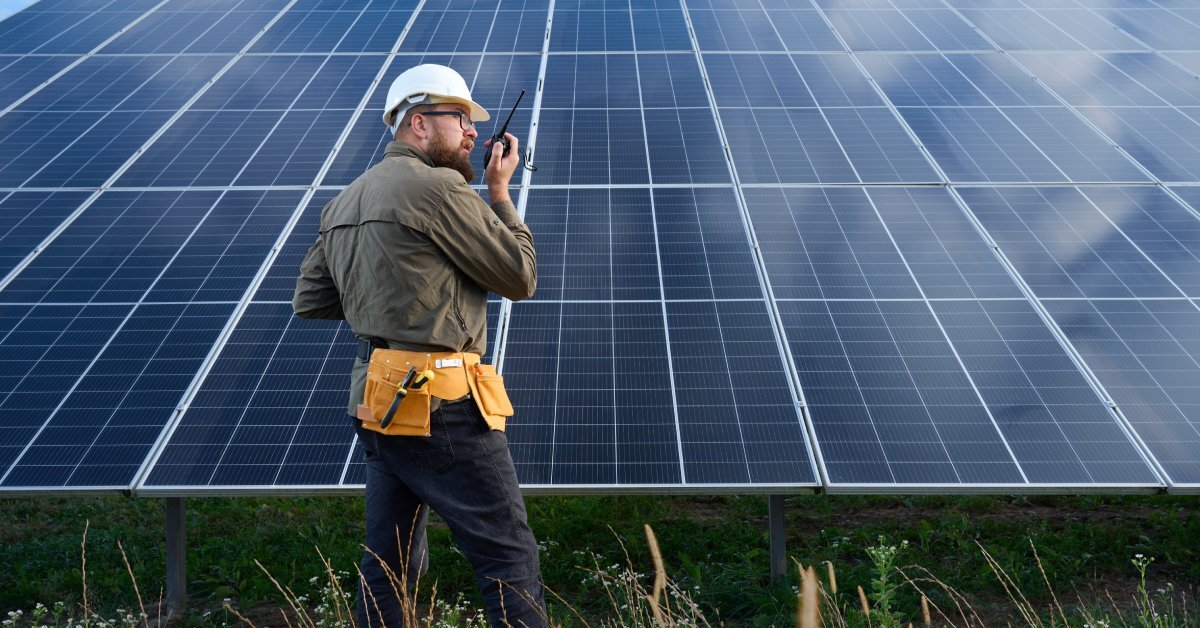Oct 21st 2025
Checklist for a Solar Energy System Inspection
Regular solar system inspections are crucial for maintaining optimal performance, ensuring safety compliance, and safeguarding your investment. Whether you're managing a commercial installation or overseeing residential projects, a systematic inspection process helps identify potential issues before they become costly problems.
Solar energy systems require careful monitoring to deliver optimal returns. Even minor defects or inefficiencies can have a significant impact on energy production and system longevity. This comprehensive checklist for solar energy system inspections provides the framework your team needs to conduct thorough inspections that meet industry standards while maximizing system performance.
Proper inspection protocols also help navigate regulatory requirements and maintain warranties, making them crucial for businesses operating across multiple markets with varying compliance standards.
Pre-Inspection Planning and Safety
Before beginning any solar system inspection, establish clear safety protocols and gather the necessary documentation. Review the system's installation records, warranty information, and previous inspection reports to understand the system's history and identify areas requiring special attention.
Safety equipment is non-negotiable. Ensure your inspection team has proper fall protection gear, electrical testing equipment, and personal protective equipment (PPE). Weather conditions must also be favorable—avoid inspections during high winds, rain, or extreme temperatures that could compromise safety or inspection accuracy.
Create a detailed inspection schedule that allows adequate time for each system component. Rushing through inspections increases the risk of missing critical issues that could lead to system failures or safety hazards down the line.
Visual Inspection of Solar Panels
Start your inspection by examining each solar panel for visible damage or wear. Look for cracks in the glass surface, which can allow moisture infiltration and lead to significant performance degradation. You should document even hairline cracks, as they often expand over time due to thermal cycling.
Check for discoloration or hot spots on panel surfaces, which may indicate cell degradation or electrical issues. Brown or yellow discoloration typically suggests moisture intrusion, while dark spots might indicate overheating cells that require immediate attention.
Examine panel frames for corrosion, particularly at mounting points where dissimilar metals may interact. Aluminum frames should exhibit minimal corrosion; however, any signs of deterioration require documentation and potential remediation planning.
Verify that all panels remain properly aligned and secure in their mounting systems. Panels that have shifted or loosened may not only underperform but also pose safety risks during high winds or seismic events.

Electrical System Assessment
Electrical components require careful inspection to ensure safe operation and optimal performance. Begin by examining all wiring connections, looking for signs of corrosion, looseness, or heat damage. Pay special attention to MC4 connectors, which should show no signs of melting or discoloration.
Measure string voltages using a digital multimeter to verify that each string produces expected voltage levels. Significant deviations from manufacturer specifications may indicate damaged panels, faulty connections, or other electrical issues requiring immediate attention.
Inspect inverters for proper operation by checking display readings, error codes, and cooling fan functionality. Inverters operating at higher-than-normal temperatures may indicate airflow restrictions or internal component failures that could lead to premature system shutdown.
Review grounding systems to ensure all equipment remains properly bonded and connected to the grounding electrode system. Poor grounding not only violates electrical codes but also creates serious safety hazards for maintenance personnel and building occupants.
Prioritize Electrical Tags
While not directly a part of the electrical components of the solar system, placards and labels are a crucial component for proper safety regulations.
Durable solar tags can help inspectors or crew members identify important equipment and provide essential information such as maximum voltage, amperage ratings, and warning messages. Maintaining them can help make safety checks easier, as this important information is easily accessible.
Monitoring System Evaluation
Modern solar installations rely heavily on monitoring systems to track performance and identify issues. Verify that all monitoring equipment functions correctly and communicates properly with central monitoring platforms.
Compare actual energy production data against expected performance calculations based on solar irradiance conditions. Significant underperformance may indicate soiling, shading issues, or equipment malfunctions that require investigation and attention.
Check data logging intervals and ensure that historical performance data remains accessible. This information proves invaluable for identifying long-term performance trends and planning maintenance activities.
Verify that the monitoring system's alert function works properly by testing notification systems and confirming that key personnel receive the appropriate alerts when system issues arise.

Mounting System and Structural Integrity
Examine all mounting hardware for signs of loosening, corrosion, or fatigue. Stainless steel bolts should show minimal corrosion, while galvanized components may show some surface oxidation that doesn't compromise structural integrity.
Inspect roof penetrations for proper sealing and weatherproofing to ensure a secure and watertight roof. Even minor leaks can cause significant damage to a building over time, so any questionable seals should be addressed immediately.
Verify that mounting rails remain straight and properly supported. Sagging or twisted rails may indicate overloading or inadequate structural support that could lead to system failure.
For ground-mounted systems, verify the foundation's integrity and ensure that the grounding system remains stable and well-drained. Settling or erosion around foundations requires immediate attention to prevent structural damage.
Performance Testing and Documentation
Conduct electrical performance tests using calibrated equipment to measure actual system output under current conditions. Document all measurements and compare them against baseline performance data from system commissioning.
Perform insulation resistance testing on DC circuits to identify potential ground faults or insulation breakdown. This testing is particularly important for older systems or installations in harsh environmental conditions.
Take thermal images of electrical components to identify hot spots or abnormal heating patterns that may indicate developing problems. Thermal imaging can reveal issues not visible during standard visual inspections.
Document all findings with photographs and detailed notes. Create a comprehensive inspection report that includes recommendations for corrective actions, maintenance scheduling, and component replacement planning.
Leveraging Technology for Comprehensive Inspections
Modern inspection techniques incorporate advanced technologies that provide deeper insights into system performance and condition. Drone inspections can identify panel damage, soiling patterns, and thermal anomalies across large installations more efficiently than traditional methods.
Advanced monitoring platforms now offer predictive analytics that help identify potential failures before they occur. These systems analyze performance patterns and environmental data to recommend optimal maintenance timing and resource allocation.
Ensure Your Project Functions Properly
Adhering to a checklist for solar energy system inspections can help ensure the long-term success of the project. By minimizing the risks of breakdowns with these inspections, your business can see a decrease in maintenance and replacement costs, directly improving your return on investment.
Begin your checklist with solar placards and labels that help identify key components of your solar energy system. With Get Solar Labels, you can find up-to-code labels that are compatible with your current setup. We also offer custom same-day services that can help you get the solar tags you need. Browse our catalog to find the right options for you.

